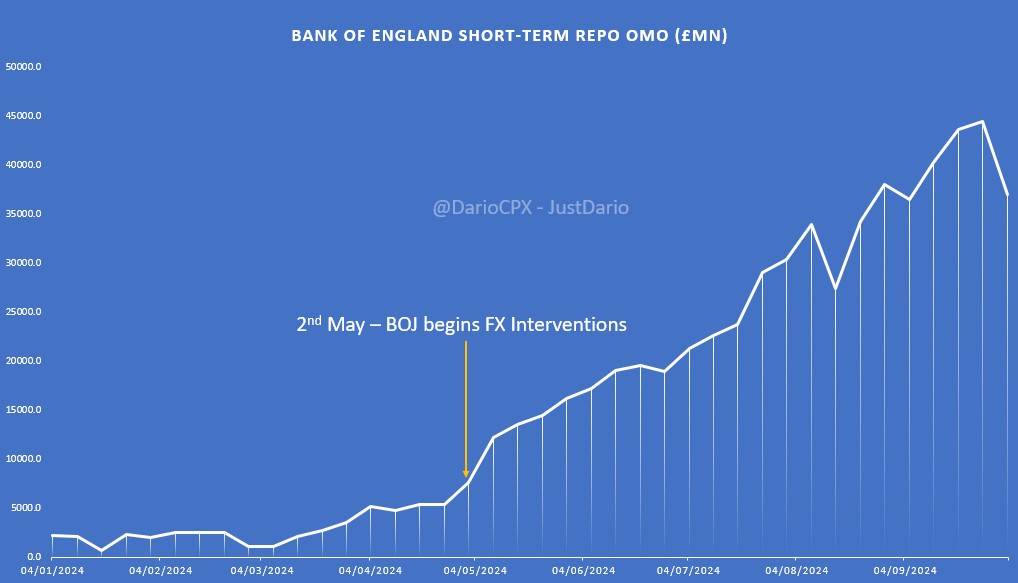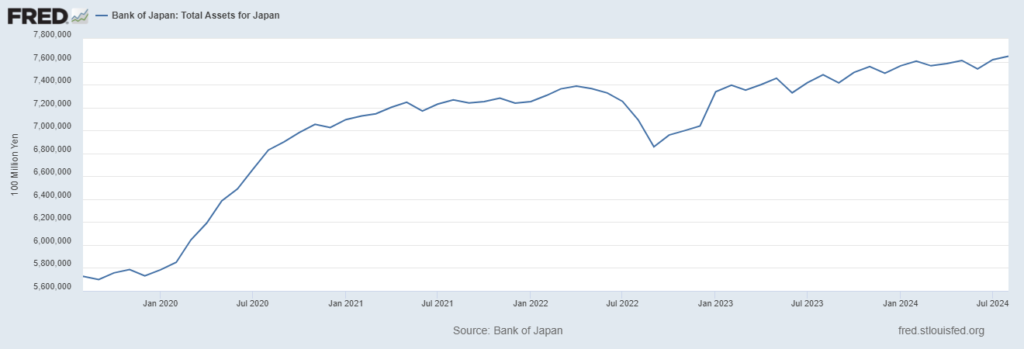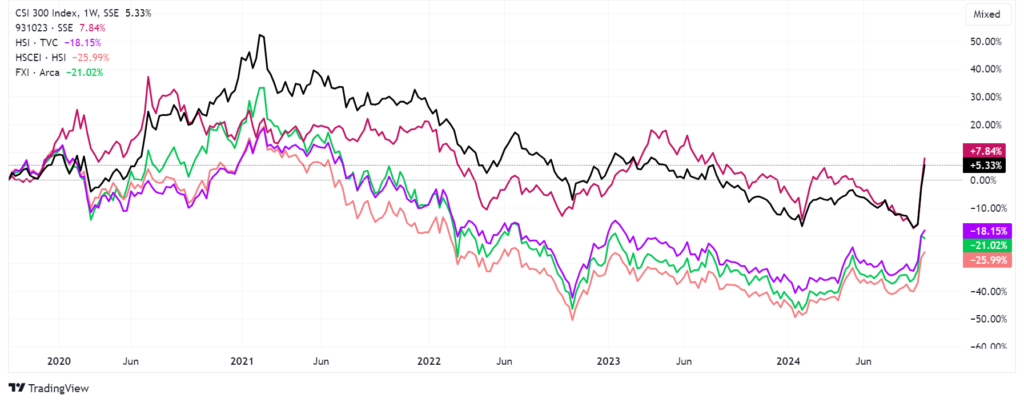
Yesterday was the end of the third quarter of the year, which means banks (along with brokers and asset managers) were busy “window dressing” their books to make sure they looked as good as possible by the time the quarter-end snapshot of their financials was taken. Bank goals heading toward this window typically are:
- Raise as much liquidity as possible in their cash/money market accounts
- Repo out in the market any asset they are overexposed to (especially troubled ones that cannot be held in HTM books)
- Push off balance sheet any position or risk exposure that would raise scrutiny on the risk carried in their books.
Needless to say the liquidity “stress” in the system during these specific days of the year is naturally very high, however, when “everything is awesome” liquidity ends up making its way through the plumbing of the market and there is always an interest at which a cash-rich bank or asset manager is willing to lend money even to the weakest banks of the pack.
We already spotted a couple of months ago an unusual increase in the usage of BOE Repo facilities to inject liquidity in the market clearly connected with the JPY carry trade troubles (”THE JPY CARRY TRADE IMPLOSION CONTAGION IS ALREADY SPREADING INTO THE UK”). As you can see from the updated chart below, rather than abating along with the fading JPY carry trade forced unwinding emergency, the usage of the BOE facility keeps increasing. Why? The damages of the 5th of August not only cannot be undone as quickly as the MSM narrative wants everyone to forget, but as a matter of fact, they are expanding.

Of course, when we talk about liquidity injections in the market we cannot avoid mentioning the BOJ that, despite pledging to start tapering its QE on the 31st of July, keeps printing JPY expanding its balance sheet. They have no alternatives considering the precarious state of the Japanese financial system: “NOT ONLY IS NORINCHUKIN ABOUT TO LIVE THROUGH THE 2008 NIGHTMARE AGAIN, BUT MANY JAPANESE BANKS ARE IN THE SAME SITUATION”.

Considering all these “smaller” central banks actions were starting not to be enough to protect the financial markets bubble and to make sure the large bank clearly in trouble somewhere did not implode under the weight of mounting losses in its balance sheet, the FED stepped in 2 weeks ago raising many eyebrows with its decision to cut rates by 50 basis points despite claiming the economy is strong. This was the obvious reason why they did that as I flagged in this article right away after the news of their monetary policy decision hit the tape:
The FED is signaling that the financial system cannot sustain the current rate levels anymore, but wary of the reaction and quick escalations that unfolded in the banking crisis last year, this time around they are very careful in disclosing which financial institution is particularly in trouble
Besides the yield curve inverting back to positive being a consistent signal of dark clouds gathering around the stock market and the financial system (THE US YIELD CURVE IS SCREAMING “DANGER!” AND ONCE AGAIN NOBODY IS LISTENING), another corner deep into the plumbing of the global financial system was flashing warning signals ahead of the FED decision: T-Bills money market (article). What’s happening today in many ways starts looking like the situation that began at the end of 2022 and then exploded in the first months of 2023:
Why were banks stashing so much pristine collateral? Because Credit Suisse was already showing signs of distress: “Credit Suisse Saw $88 Billion Outflows as Confidence Slumped”. Basically, banks were “running for the hills” and pulling their cash from the global system and redeploying it in T-Bills since this is a much safer alternative, even considering that, contrary to what everyone believes, not all banks have direct access to Central Banks, hence the possibility to “park” their cash there.
A few months later, SVB goes bust, kicking off the US regional banks crisis. At this point, T-bills start to sell off quickly. Why? Because banks started to liquidate the collateral they held from their counterparts failing to meet margin calls. This is when the FED stepped in, setting up the BTFP because it couldn’t afford to cut rates (similar to what’s the case today “IF THE FED CUTS RATES, THE DAMAGES WILL BE FAR GREATER THAN THE BENEFITS“).
In the same way, the FED wasn’t deaf to these warning signals (personally I believe they know very well who is in trouble, but they keep it quiet to avoid “panic” and “contagion”), China was paying attention as well and it unleashed a set of measures aimed at strengthening its banks and financial markets of a magnitude not seen since the 2008 GFC (A BIG BANK IS ON LIFE SUPPORT, CHINA KNOWS IT AND IS PREPARING TO WITHSTAND THE SHOCK – IS THIS BULLISH?). The market reaction to this was hilarious, to say the least. While in China everyone is aware of the government goals as I described here and knows these policies are not aimed to expand valuations multiples, everyone outside China (especially in the US) jumped head first back into China stocks on the false premise that the “bazooka” is aimed at inflating stocks values from fair multiples to the bubble levels everyone is enjoying in the US since so long that they forgot what the real meaning of multiples like Price/Earnings is. To give you an idea of this insanity Wingstop Inc, a chain of restaurants that mainly sells buffalo wings in the US, is currently trading at 129 P/E. Believe me, I wish it was a joke, but it isn’t. Meanwhile, everyone was FOMOing on China stocks from abroad, someone in the MSM ran the numbers and it did not take long to figure this out: “China’s Weak Factory Activity Shows Urgency of Stimulus Push”. Clearly not bullish, neither on the economy nor on the financial markets front, but we live in times where only (made up) narratives that go viral matter, not the reality. As a matter of fact, the local buying into stocks after the stimulus announcement has been a small fraction of the total according to the brokers (both institutional and retail) I reached out to. Why? Everyone still remembers what happened in 2014-2015 and every attempt to catch a bottom so far (every time after a new “stimulus” announcement) in the recent past ultimately failed as you can see in the chart below. Will it be different this time? If you think that the US bubble can pop without dragging down all other major markets including China then the answer is yes. Statistically, being correlation-positive, this cannot happen but who cares about the numbers when everyone feels an accomplished trader right?

The latest development of this incredible saga that objectively does not have anything bullish in it, the reason why (I reiterate) I am staying at a safe distance from any type of stock and short-term speculation, happened a few our ago with the mother of all the warning signals triggering: The Federal Reserve Standing Repo Facility (aka the facility for emergency liquidity lending to banks) reactivated for the first time since June 2020. Yes, the last time there was a drawdown was when the whole world was in lockdown, and not even the US regional banking crisis and Credit Suisse implosion of 2023 forced any major financial institution to tap liquidity from it. This should give you a sense of the magnitude of this event.

What does this event mean? Banks access the Federal Reserve’s Standing Repo Facility (SRF) when they need quick cash to manage short-term liquidity during market stress, volatility, or unexpected funding shortages. It effectively helps banks avoid selling assets at a loss, meet regulatory requirements, and manage their balance sheets efficiently, particularly during tight market conditions or quarter-end and year-end reporting periods. In a nutshell, a large bank needed liquidity and could not find it anywhere but the FED which acted as the lender of last resort. Does this make you feel bullish? You tell me.
The access to the FED SFR is restricted though so we can narrow down the list of suspects potentially in trouble to the list below:
- Ally Bank
- Bank of America, National Association
- Banco Popular de Puerto Rico
- Barclays Bank PLC, New York Branch
- Canadian Imperial Bank of Commerce, New York Branch
- Capital One, National Association
- Charles Schwab Bank, SSB
- Charles Schwab Premier Bank, SSB
- Charles Schwab Trust Bank
- Citibank, N.A.
- Citizens Bank, N.A.
- Credit Agricole Corporate and Investment Bank
- Fifth Third Bank, National Association
- First-Citizens Bank & Trust Company
- Goldman Sachs Bank USA
- HSBC Bank USA, N.A.
- JPMorgan Chase Bank, N.A.
- KeyBank National Association
- Manufacturers & Traders Trust Company
- Mizuho Bank, Ltd., New York Branch
- Morgan Stanley Bank, N.A.
- Morgan Stanley Private Bank, National Association
- MUFG Bank, Ltd., New York Branch
- Natixis New York Branch
- Navy Federal Credit Union
- PNC Bank, National Association
- Regions Bank
- State Street Bank and Trust Company
- Sumitomo Mitsui Banking Corporation, NY Branch
- The Bank of New York Mellon
- The Huntington National Bank
- The Norinchukin Bank, New York Branch
- Truist Bank
- USAA Federal Savings Bank
- U.S. Bank National Association
- Wells Fargo Bank, N.A.
- Zions Bancorporation NA
As you know my number one suspect is Norinchukin (NORINCHUKIN BANK CHAOS CAN TRIGGER AT ANY MOMENT) but there are plenty of names there that showcase balance sheets not in a great shape (WHICH BANKS ARE AT RISK OF GOING BUST IN A LIQUIDITY CRISIS? – EPISODE 2).
What’s going to happen next? If whoever borrowed 2.6bn$ from the FED (there was also a 250m tranche using MBS) can repay in 24 hours then the financial system will likely not spoil the FOMO bubble, especially in stocks, before elections. However, if these drawdowns occur after the quarter-end stress, even worse if they increase from here, then it is a pretty strong signal big troubles are brewing and it will be very difficult to hide them from the public till after the US elections.

Comments (2)
Comments are closed.